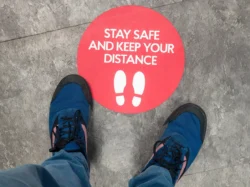Medicare is a federal health insurance program for people who are 65 or older. It also applies to those under age 65, individuals with specific disabilities, and anyone with end-stage renal disease. The program provides medical and prescription drug coverage through two main parts: Part A (hospital insurance) and Part B (medical insurance). It is paramount to learn more about the Medicare program.
What is Medicare?
Medicare is a health insurance program created by the Social Security Act of 1965. It’s administered by the Center for Medicare & Medicaid Services (CMS). It provides health insurance coverage to people 65 or older, people with disabilities, and end-stage renal disease.
How Much Will Medicare Cost?
Part A and Part B are both free for most people. However, if you earn over $85,000 per year as an individual or over $170,000 for a couple filing jointly, you will pay a monthly surcharge of up to $426. The charges apply for each month you don’t have sufficient coverage from another source. For example, if your income is $100,000 per year and you’re without any additional coverage at all during the year, your Part A premium would be calculated at 25% of the amount over $85,000: ($100 − 85) × .025 = $2.50/monthly premium for Part A.
If you choose not to enroll in Part B when first eligible and later decide that it’s beneficial to do so, there’s no penalty or waiting period imposed by Medicare. However, if it turns out later that someone else should have enrolled in their stead (because they had higher net worth), then there could be consequences.
When Is the Right Time to Enroll?
As a Medicare beneficiary, you have three general enrollment periods.
The first enrollment period is from October 15 to December 7. To avoid penalties, you must enroll in Part B during this time. The second enrollment period is from January 1 to March 31 of the following year and applies if you didn’t sign up for Part A during your initial enrollment period. It also applies if your circumstances changed between that time and now (for example, you got married). The third general enrollment period runs from April 1 through June 30. Like the second one, it only applies if your circumstances changed between January 1 and June 30 (like getting divorced).
Your Medicare Options
Medicare has several different parts, each with its coverage.
• Part A covers hospital services and medically necessary skilled nursing facility care. It’s free if you have paid enough Medicare taxes while working. Otherwise, you must pay a monthly premium for this Part of Medicare (it’s usually deducted from your Social Security check).
• Part B covers many services that are not covered by Part A. It can include lab tests, outpatient hospital diagnostic services, clinical laboratory tests ordered by a doctor or other health care provider, x-rays, kidney dialysis treatment, physical therapy, speech therapy, and other types of therapy. It may also include limited home health aide services when medically necessary to treat an illness or injury which requires more than just one visit from the home health aide within 30 days to stabilize your condition before returning to the hospital after discharge. Home health care may also be covered under private insurance. You pay a deductible ($183 in 2018) before most benefits kick in. There is no limit on how many medical expenses will cost you during any given year unless you go over $3,700 total per year ($633 per month) of out-of-pocket costs. This amount is indexed yearly based on inflation measured by the Consumer Price Index (CPI).
Hospice Care
The Medicare program covers hospice services for patients with terminal illnesses. It only applies to patients who are expected to live six months or less. Hospice care is designed to relieve the pain of a disease, not to cure the disease itself. To qualify for Medicare coverage of hospice services, you must be diagnosed with an illness that qualifies as terminal or palliative (which means it will not get better). It must have been determined by your physician to have no benefit from further medical treatment.
Hospice care can be provided in your home or at a nursing home close to your family members and friends who live nearby. It includes:
• Nursing services
• Physical therapy
• Personal care assistance
• Spiritual support (including prayer).
Call for Help
The Medicare helpline is available 24 hours a day, seven days a week. If you have questions about your Medicare coverage and how it works, call the number on your Member Handbook. This will connect you with an experienced representative who can answer any questions or concerns you may have. Remember, if at any point in this process you are confused about something or think it doesn’t make sense for some reason, ask for help. Medicare representatives are always ready and willing to listen—and they’re there to help.
Callers can also report problems with their insurance company’s customer service representatives or billing practices by calling the number in their handbook. This will be routed directly to our office, where we’ll do everything possible to resolve the issue.
Aspects to Medicare
Medicare has four parts. Part A covers inpatient hospital stays, skilled nursing facility care after a hospital stay, hospice care, and some home health services. Part B covers outpatient services such as doctor’s office visits, diagnostic tests, durable medical equipment, and other items. Part C plans offer additional benefits beyond Parts A & B or stand-alone prescription drug coverage. Part D plans offer prescription drug coverage only.
Conclusion
The Medicare program is a well-established healthcare benefit millions of Americans rely on. By understanding the basics of Medicare, you can make informed decisions about your coverage and use it wisely.







